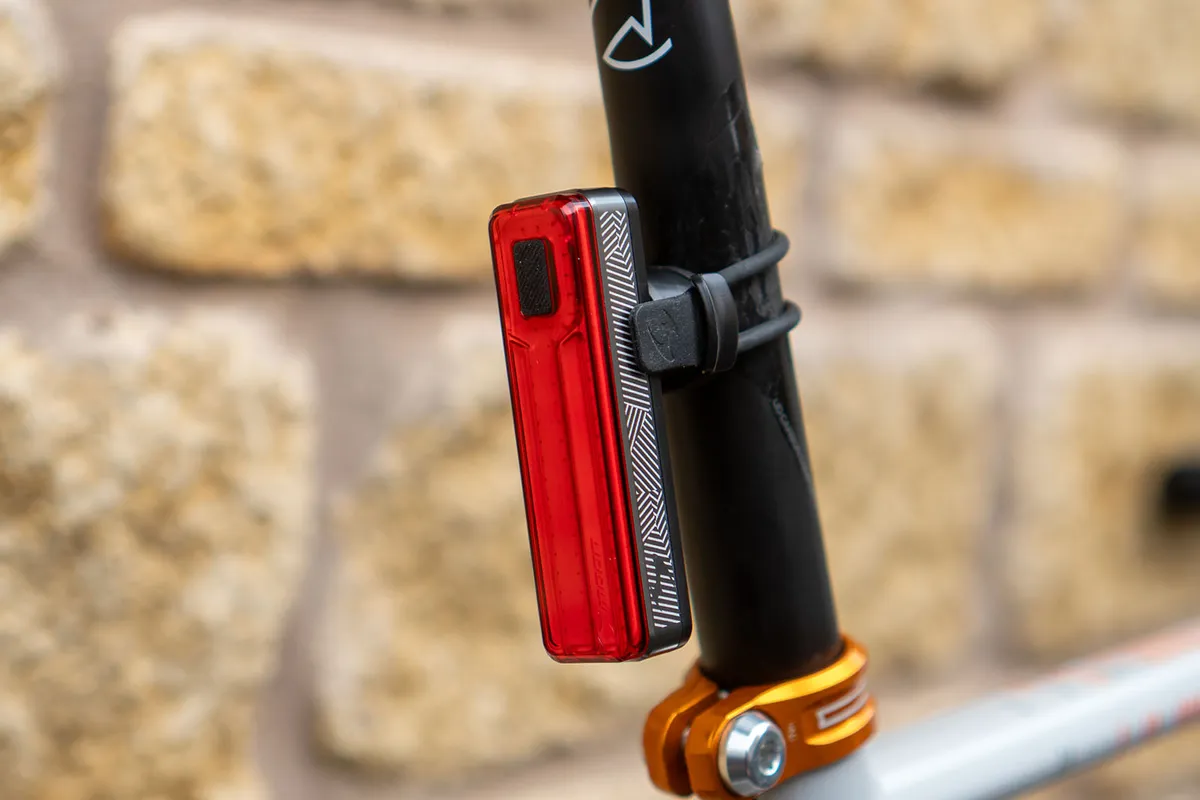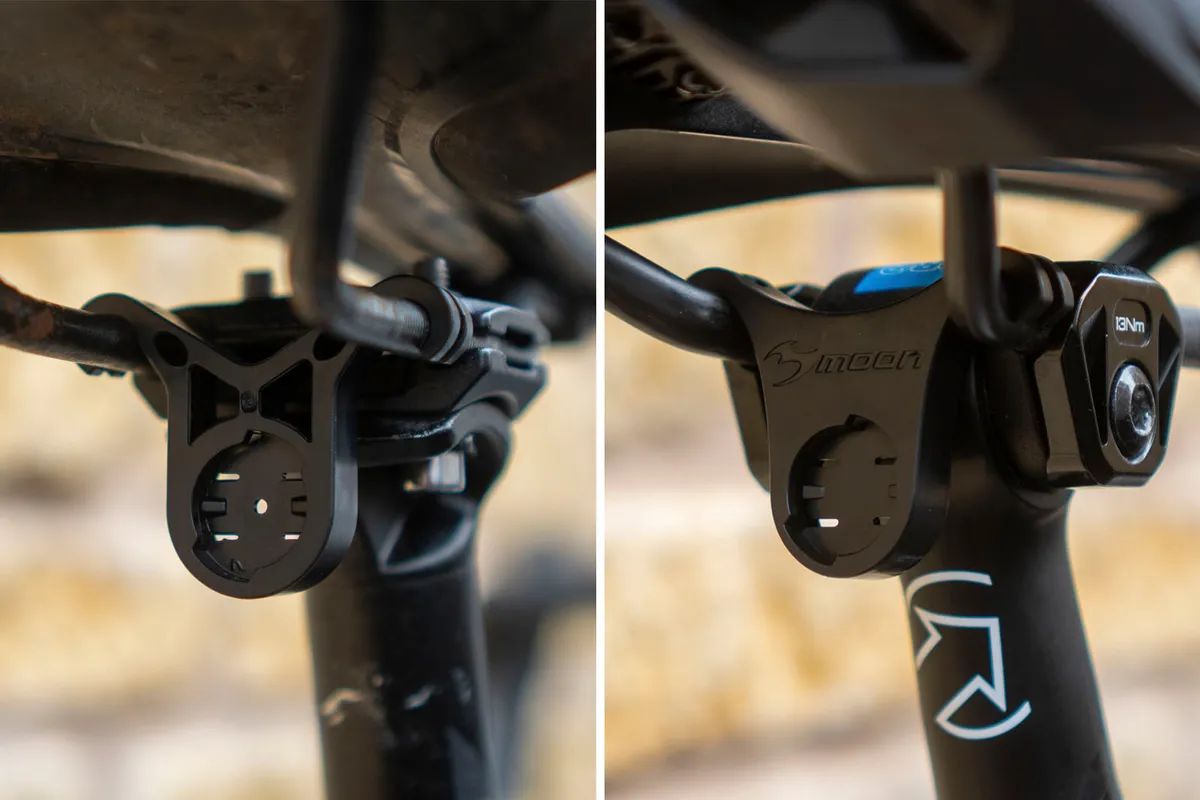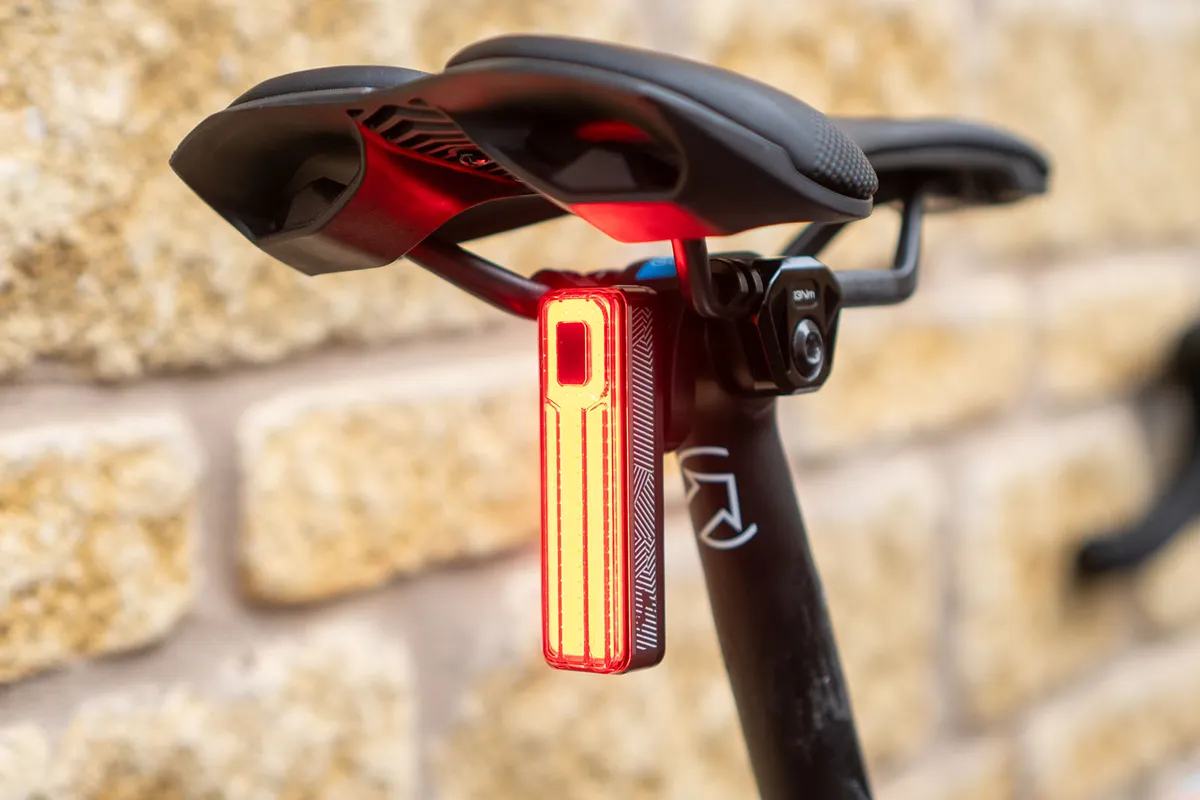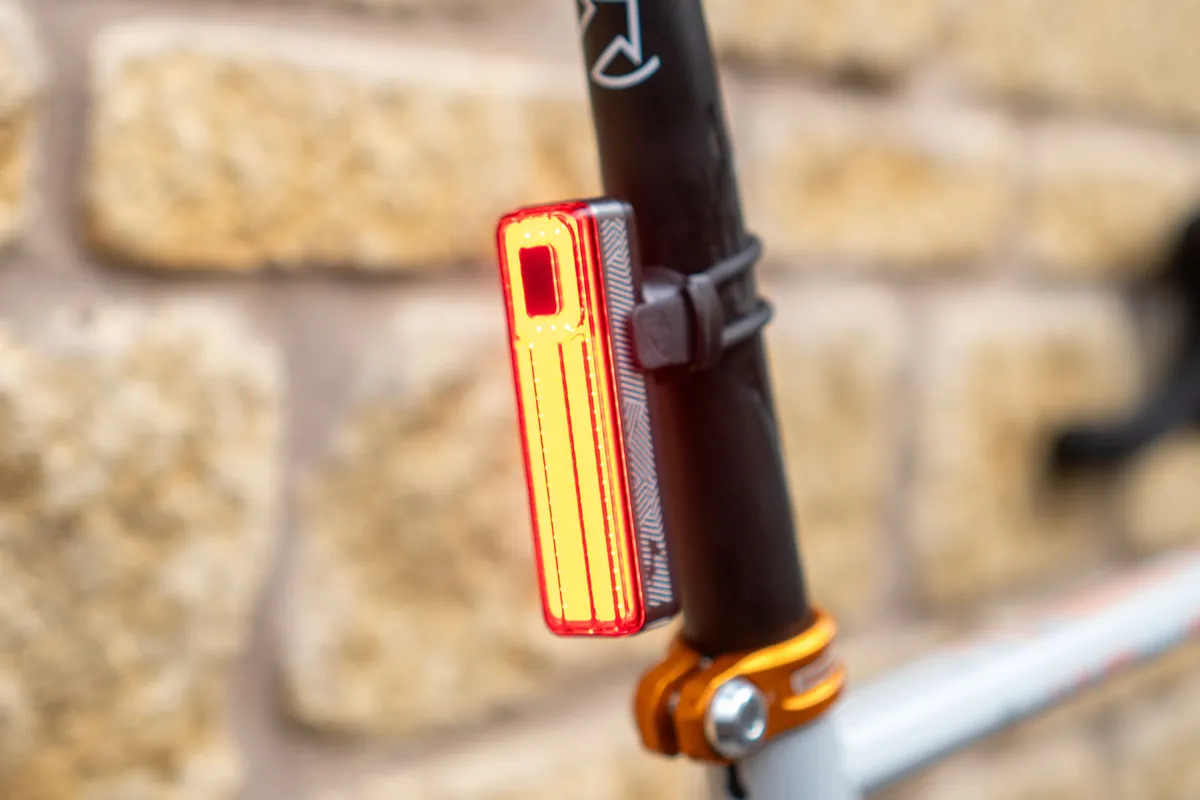The Moon Helix Max packs a lot of useful features into its diminutive dimensions, even offering the ability to customise mode brightness.
Moon should be complimented for giving users the ability to make the Helix Max as close as possible to the perfect light for them, while if you use only the basic functionality, it’s still a very good light.
The single-button user interface proved a little challenging to get my head around, but this is the only major downside of a very competent, bright rear bike light.
Moon Helix Max rear light details and specifications

The Moon Helix Max punches out up to 250 lumens using its chip-on-board (COB) LED design.
Out of the box, it has two static modes (‘mode 1’ and ‘mode 2’) and three flashing modes. These are accessible on two levels, toggling between the static and flashing settings via a double-click of the function button.
On top of this, the Helix Max has what Moon calls ‘Intelligent Operation’, an optional setting where an ambient light sensor will detect the conditions and automatically select a day flash (during the day, of course).
If the ambient sensor senses the light conditions are too low, it will settle into a five-mode selection: day flash (250 lumens), steady flash (60 lumens) and ‘flash 1’ (40 lumens), while another double-click offers up mode 1 (80 lumens) and mode 2 (5 lumens) by default.
Both of these Intelligent Operation settings make use of the light's motion sensor – stay still for 20 seconds and the output drops to 5 lumens. After 60 seconds, it switches to sleep mode to save battery. After an hour, it switches off completely.
The Helix Max also includes Moon’s ‘Variable Lumen System’ – essentially, this gives you the ability to customise the lumen output of the standard modes already mentioned.
Moon provides some flow-chart style instructions in the box for all of this, which were (just about) clear enough for me to understand.
Because the light has only one function button, accessing all these settings and controls is a bit confusing, taking various presses and press-and-holds. It took me three solid focused stints to work it out, and I still needed to use the instructions afterwards.

An app, like the one the See.Sense Icon 3 benefits from, would be worthwhile here to activate or deactivate certain modes and settings.
Predicted battery life is dependent on the brightness settings you choose. The static modes, for example, are said to deliver anywhere between 2 hours 10 minutes and 26 hours. Set to its brightest, the day flash mode should yield around 18 hours of battery life.
The light attaches to the bracket via a small Garmin-style, click-mount interface. The bracket secures to the seatpost using a detachable band.
Two bands are included for rounded or deep seatposts and two rubber adaptors are included: one that compensates for a seatpost angle and one that doesn’t (ostensibly, for a time trial bike with a steeper angle).
There’s also an under-saddle mount, which hooks onto the saddle rails.
The light charges via a USB-C port, in keeping with the latest standards.
The Moon Helix Max costs £39.99 / $49.90.
Moon Helix Max rear light performance

The Moon Helix Max was a challenge to get to grips with in terms of finding my way around the modes.
Testing many rear lights back-to-back means I need to keep various user interfaces in my head, which can confuse things a little, and the Helix Max is certainly one of the more complex to use to its full capacity.
Turning it on and off, and moving between the static and flashing mode levels is easy enough, though, which will be ample functionality for many.
The default brightness settings give access to the full 250-lumen power, which is arguably the most important thing. Once I’d played around with the adjustable brightness, I was forced to conclude I didn’t really need to and was happy to leave it as is.
The COB LEDs create an effective board of light. The static 80-lumen mode is powerful and the day flash mode punches through even bright, sunny autumnal daylight.
I preferred to use the static mode (at its brightest) for most cases, given the distinctiveness of the COB LEDs, although the battery is burned through in 2 hours 15 minutes in this power-hungry setting.

The also COB-equipped Knog Blinder V lasts for more than double the time, but only delivers 30 lumens. You can adjust the brightness of the Moon to balance battery life and brightness, should you wish.
While I generally prefer to have manual control over my bike lights, the Intelligent mode is effective and switches between daytime and nighttime functions well.
I’d estimate it kicks in a few minutes before sunrise and after sunset on a partially sunny day, but this depends heavily on factors such as cloud cover.
When I stopped and left the bike alone, the Helix Max switched off as advertised. After an hour, it needs manually switching back on, but that’s not much of a hardship.
It also switched itself off at one prolonged traffic light stop – I was lucky to notice it and I must have been standing very still, but it started again straight away once I got going.
It’s a slight niggle in my mind, that it could switch off and a car approach me from behind at night, when Intelligent mode is activated.
The attachment brackets are easy to fit and remove, although the saddle-rail mount completely removes the possibility of using saddle bags, given the length of the light itself.
The click-mount interface for the light is secure, holding the light steady. It’s handy to have a seatpost angle-compensating insert, and time triallists will be cheered by the spare flat insert too.
Rear bike lights | How we tested
Rear lights are essential accessories. Legal requirements at night in the vast majority of territories, many also prefer to use them during the day, year-round, to boost their visibility.
For this test, carried out in autumn 2023 in the UK, we selected some of the latest rear bike lights for the road.
Testing included use as commuter lights and companions for longer weekend rides, as well as seeing use on owned and test bikes. A burn-time test was also carried out, using the most battery-intensive mode to give an indication of life. We suggest using this as a guide only.
Lights on test
- Lezyne Strip Drive Pro 400 Rear
- Cateye Viz450
- Knog Blinder V
- Magishine SeeMee 300 Smart
- Ravemen TR500
- Moon Helix Max
Moon Helix Max rear light bottom line

The Moon Helix Max is a very competent rear light.
Although I wouldn’t personally make use of all the modes and settings, it functions very well with those switched off, while they work well when switched on too.
The user interface is a little complex, but once you’ve found the right settings for you and leave them alone, there’s no reason why this should concern most people.
Product
| Brand | moon |
| Price | 40.00 GBP,50.00 USD |
| Weight | 56.0000, GRAM () - inc. bracket and small strap |
Features
| br_lightType | rear |
| br_integratedBattery | yes |
| Features | Modes: 2 static, 3 flashing, plus intelligent modes Water resistance: IPX7 |
| br_outputLumens | 250 |
